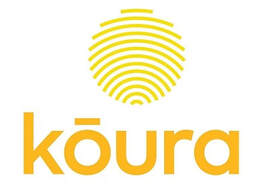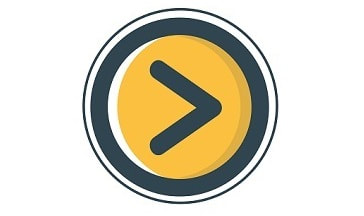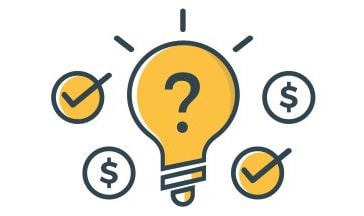kōura Kiwisaver Review - is this challenger the KiwiSaver scheme for you?
We review the funds, fees, robo-advice feature, and pros and cons of this innovative KiwiSaver scheme
Updated 16 May 2022
In this guide, we outline what kōura KiwiSaver is, how it differs from standard KiwiSaver providers, and why its unique approach to avoiding "growth" and "balanced" funds can help to maximise savings by the time you retire. We outline how kōura is different from other KiwiSaver schemes, as well as looking at whether it's safe to invest in given its recent appearance as a KiwiSaver option. This guide covers:
Please note: MoneyHub is not a Financial Adviser, and this guide has been published to explain the investment fundamentals and outline the pros and cons of kōura as a KiwiSaver provider.
- The Specs of kōura Funds
- What funds does kōura offer, and what's the difference between them?
- Who is kōura Suited to?
- kōura KiwiSaver - What You Need to Know
- kōura FAQs
- The Competition - kōura vs Simplicity vs JUNO vs other challenger KiwiSaver schemes
- The Bottom Line
- 7 Things to Know About kōura's Kiwisaver Scheme
- Our Conclusion
Please note: MoneyHub is not a Financial Adviser, and this guide has been published to explain the investment fundamentals and outline the pros and cons of kōura as a KiwiSaver provider.
Know this first: kōura argues it exists as a 'KiwiSaver 2.0' scheme by making sure people save enough for retirement
Advertising Disclaimer: MoneyHub may earn a referral bonus for anyone that’s approved through some of the below links. Our research and findings are independent of any bank, credit card issuer, or product manufacturer/service provider, and have not been endorsed by any of these entities. Please see our Advertising Policy for more details about how we make money.
- Most KiwiSaver schemes don't focus on whether your savings will be sufficient to upkeep your lifestyle in retirement. Instead, you contribute at least 3%, your employer throws in 3% and time and market returns take care of the rest. Whether or not the balance you have at aged 65 is enough for what you need isn't a consideration.
- kōura believes that the majority of New Zealanders have not set up their KiwiSaver properly, they don’t have the right fund type and have not properly considered their contribution rates to give them what they expect in retirement.
- kōura's response to this is their digital advice offering; every kōura customer is told what their KiwiSaver outcomes will be before signing up, and kōura builds a personalised portfolio (the process of which we outline below).
- It's questionable whether financial advisers would be as thorough in identifying how much you should save per week for retirement; kōura's technology puts this critical question at the heart of the investment process.
- We applaud kōura for challenging the status quo by putting short-term (i.e. first home deposit withdrawal) and long-term investor needs (a comfortable retirement) at the core of the scheme.
Advertising Disclaimer: MoneyHub may earn a referral bonus for anyone that’s approved through some of the below links. Our research and findings are independent of any bank, credit card issuer, or product manufacturer/service provider, and have not been endorsed by any of these entities. Please see our Advertising Policy for more details about how we make money.
MoneyHub Founder Christopher Walsh shares his observations around kōura KiwiSaver"kōura is one of the most innovative KiwiSaver schemes available, as explained in this review. However, because the scheme is not widely known in New Zealand, it's better to explain some of its key elements upfront.
Firstly, with kōura, you can build a KiwiSaver portfolio by choosing a mix of its nine funds. It offers a digital advice tool for choosing your funds based on your risk profile and retirement plans. While kōura has traditionally offered growth funds and some income funds, it recently launched three speciality funds. These won't appeal to everyone, but they allow people to invest based on their beliefs and views. In addition, they offer specific funds that provide exposure to:
kōura is innovative in offering the first CryptoCurrency KiwiSaver fund. We know how popular crypto is based on our Bitcoin guide but understand it's not for everyone. Bitcoin is not without its risks, and kōura limits your investment to up to 10% of your KiwiSaver balance. I believe kōura is a KiwiSaver scheme that will appeal to anyone who wants standard investments (local and overseas shares), exposure to specific sectors (property, clean energy, etc.), and/or someone interested in Bitcoin. The funds individually offer growth potential while remaining diversified, and the Robo-advice tool gives some ideas about funds that may suit your needs". |
MoneyHub Founder Christopher Walsh
|
The Specs of kōura Funds
kōura offers six core growth and index funds, which themselves invest in Blackrock ETFs, and three speciality funds, which cover clean energy, property and crypto. kōura states clearly that it "believes index investing will provide a better return over the very long horizon for a typical KiwiSaver investor". kōura is not alone in offering index funds for KiwiSaver - Simplicity and Superlife are two other examples.
kōura's KiwiSaver funds are comprised of over 3,000 different investments in 50+ countries, and overseas investments are 70% hedged to the NZ dollar. This means that if the NZ Dollar rises against any overseas currency, 70% of the value of the overseas investment will be affected. For example, if the NZ Dollar falls in value against the USD, USD-denominated investments (i.e. international shares) will increase in NZ Dollar-terms. For this reason, exchange rate movement is an investment risk.
The fees are as followed:
Speciality Fund Investment Products include:
kōura's KiwiSaver funds are comprised of over 3,000 different investments in 50+ countries, and overseas investments are 70% hedged to the NZ dollar. This means that if the NZ Dollar rises against any overseas currency, 70% of the value of the overseas investment will be affected. For example, if the NZ Dollar falls in value against the USD, USD-denominated investments (i.e. international shares) will increase in NZ Dollar-terms. For this reason, exchange rate movement is an investment risk.
The fees are as followed:
- Annual fees (core funds): $30 + 0.63% of your investment balance (e.g. $6.30 for every $1,000 in your account).
- Annual fees (speciality funds): $30 + 1.10% of your investment balance (e.g. $11.10 for every $1,000 in your account).
- Transfer in and exit fees: There are no exit fees for withdrawing from any kōura KiwiSaver fund, but your existing KiwiSaver scheme provider may charge an exit fee to switch to kōura - you'll need to contact them to find out what that is.
- Cash (i.e. bank deposits in New Zealand banks)
- New Zealand Fixed Income (i.e. investments in government bonds or company debt)
- New Zealand Shares (i.e. shares in Spark, Fletcher Building and Air New Zealand)
- International Shares - including U.S, European, established Asian (Hong Kong, Singapore, Japan etc) and developing economies (Brazil, China, Mexico etc).
Speciality Fund Investment Products include:
- Cryptocurrency (KiwiSaver members can invest a maximum of 10% of their balance into the crypto fund)
- Clean energy (with a focus on technology companies innovating in the industry rather than energy generation companies)
- Property (with a focus on New Zealand Real Estate Trusts and Retirement Villages).
What funds does kōura offer, and what's the difference between them?
kōura is unique in that it doesn't offer standard fund buckets like 'conservative', 'balanced', or 'growth'. Instead, it offers six core growth and index funds; three of which invest only in New Zealand ('domestic exposure' funds), and three investing overseas ('international exposure' funds). These are:
Be aware: Unlike many other KiwiSaver funds with retain 5% or 10% in cash, even if they are growth assets, kōura's five non-cash funds are 99%+ invested in their underlying fund or shares and bonds. This anticipates that the majority of kōura's members are invested in a number of funds, including the Cash fund, so there's less need for a cash holding in each fund.
Fees: The six core growth and index funds charge a flat 0.63% p.a. management fee, while the three speciality funds have a 1.10% pa. management fee. It's arguable that 0.63% p.a. is high for cash and fixed interest funds, but kōura doesn't expect you to invest in a single fund. Instead, kōura encourages its KiwiSaver members to invest in a portfolio of these funds according to their risk profile. The result will be a mixture of growth and income assets, invested locally and/or overseas.
- International exposure funds: US Equities Fund, Rest of World Equities Fund and Emerging Markets Equities Fund, all of which are managed by Blackrock, the world's largest asset manager. All of these are growth assets because they invest in the sharemarket.
- Domestic exposure funds: NZ Equities Fund, Fixed Interest Fund and Cash Fund, all of which kōura directly managers or invests in an existing investment fund. Only NZ Equities is a growth asset; Fixed Interest and Cash are income assets because they invest in low-risk, fixed-interest securities. kōura managers its domestic funds directly with the assistance of their strategic partner Hobson Wealth, who is a cornerstone shareholder of kōura KiwiSaver. Hobson Wealth Partners is one of New Zealand’s largest wealth managers and trusted by thousands of clients.
- kōura also offers three speciality funds, which focus on New Zealand property, crypto and clean energy. We expand on these in the section below.
Be aware: Unlike many other KiwiSaver funds with retain 5% or 10% in cash, even if they are growth assets, kōura's five non-cash funds are 99%+ invested in their underlying fund or shares and bonds. This anticipates that the majority of kōura's members are invested in a number of funds, including the Cash fund, so there's less need for a cash holding in each fund.
Fees: The six core growth and index funds charge a flat 0.63% p.a. management fee, while the three speciality funds have a 1.10% pa. management fee. It's arguable that 0.63% p.a. is high for cash and fixed interest funds, but kōura doesn't expect you to invest in a single fund. Instead, kōura encourages its KiwiSaver members to invest in a portfolio of these funds according to their risk profile. The result will be a mixture of growth and income assets, invested locally and/or overseas.
kōura's KiwiSaver funds
For its overseas funds (1. to 3. below), kōura invests KiwiSaver money primarily in iShares, which are exchange-traded funds managed by BlackRock. For the New Zealand funds, investments include NZX50 companies, local government and commercial bonds, as well as a BNZ cash account. The speciality funds each have a unique investment strategy which we explain below.
The funds are as follows:
Core Growth and Index Funds
1. kōura US Equities Fund focuses on investing in dominant companies listed on the US share market.
The fund invests over 99% of its money into the iShares ESG MSCI USA Leaders ETF, which invests in hundreds of American-listed companies. Recent holdings include Microsoft, Alphabet (Google), Johnson & Johnson, Visa Inc and Procter & Gamble, among others.
2. kōura Emerging Markets Fund focuses on investing in emerging markets like developing Asia, South America and Eastern Europe.
The fund invests over 99% of its money into the iShares MSCI EM IMI ESG SCRN, which invests in Alibaba, Samsung, Tencent and the China Construction Bank, among others.
3. kōura Rest Of World Equities Fund focuses on investing in non-US and Canada shares.
The fund invests over 93% of its money into the iShares Trust iShares ESG MSCI EAFE and ETF and Xtrackers MSCI EAFE ESG Leaders Equity ETF. Both of these funds invest in companies like Roche, SAP, GlaxoSmithKline, SONY, BP and Allianz.
4. kōura NZ Equities Fund focuses on investing in the New Zealand share market.
The fund invests in NZX50 companies, with major holdings being Fisher & Paykel Healthcare, A2 Milk, Spark and Meridian Energy, among others.
5. kōura New Zealand Fixed Interest Fund focuses on fixed-interest investments in bonds and term deposits with New Zealand-based companies and organisations.
The fund invests in bonds from organisations like the Auckland Council, Christchurch International Airport, China Construction Bank (NZ) and Fonterra.
6. kōura Cash Fund is a bank account with the BNZ and exists to offer investors exposure to cash.
Speciality Funds
1. Clean Energy Fund – This fund invests in the First Trust NASDAQ Clean Edge Green Energy Index Fund. It focuses on innovation and technology companies rather than power generators. Recent holdings include Tesla, SolarEdge Technologies and Plug Power.
2. New Zealand Property Fund – kōura's focus is on REITs and retirement villages listed on the NZX.
3. Carbon Neutral Crypto Currency Fund - This fund is a New Zealand first with a 100% exposure to Bitcoin. It's also only the second carbon neutral cryptocurrency fund to launch globally.
Where to get more information about the funds and their performance?
kōura publishes its latest fund performance data here; fund updates are released every 3 months for the periods ending 31 March, 30 June, 30 September and 31 December. You can also download the latest Statement of Investment Policy and Objectives (SIPO), which outlines the scheme's philosophy and strategy.
The funds are as follows:
Core Growth and Index Funds
1. kōura US Equities Fund focuses on investing in dominant companies listed on the US share market.
The fund invests over 99% of its money into the iShares ESG MSCI USA Leaders ETF, which invests in hundreds of American-listed companies. Recent holdings include Microsoft, Alphabet (Google), Johnson & Johnson, Visa Inc and Procter & Gamble, among others.
2. kōura Emerging Markets Fund focuses on investing in emerging markets like developing Asia, South America and Eastern Europe.
The fund invests over 99% of its money into the iShares MSCI EM IMI ESG SCRN, which invests in Alibaba, Samsung, Tencent and the China Construction Bank, among others.
3. kōura Rest Of World Equities Fund focuses on investing in non-US and Canada shares.
The fund invests over 93% of its money into the iShares Trust iShares ESG MSCI EAFE and ETF and Xtrackers MSCI EAFE ESG Leaders Equity ETF. Both of these funds invest in companies like Roche, SAP, GlaxoSmithKline, SONY, BP and Allianz.
4. kōura NZ Equities Fund focuses on investing in the New Zealand share market.
The fund invests in NZX50 companies, with major holdings being Fisher & Paykel Healthcare, A2 Milk, Spark and Meridian Energy, among others.
5. kōura New Zealand Fixed Interest Fund focuses on fixed-interest investments in bonds and term deposits with New Zealand-based companies and organisations.
The fund invests in bonds from organisations like the Auckland Council, Christchurch International Airport, China Construction Bank (NZ) and Fonterra.
6. kōura Cash Fund is a bank account with the BNZ and exists to offer investors exposure to cash.
Speciality Funds
1. Clean Energy Fund – This fund invests in the First Trust NASDAQ Clean Edge Green Energy Index Fund. It focuses on innovation and technology companies rather than power generators. Recent holdings include Tesla, SolarEdge Technologies and Plug Power.
2. New Zealand Property Fund – kōura's focus is on REITs and retirement villages listed on the NZX.
3. Carbon Neutral Crypto Currency Fund - This fund is a New Zealand first with a 100% exposure to Bitcoin. It's also only the second carbon neutral cryptocurrency fund to launch globally.
Where to get more information about the funds and their performance?
kōura publishes its latest fund performance data here; fund updates are released every 3 months for the periods ending 31 March, 30 June, 30 September and 31 December. You can also download the latest Statement of Investment Policy and Objectives (SIPO), which outlines the scheme's philosophy and strategy.
Know this - because kōura is portfolio based, your KiwiSaver performance won't align with any fund
- kōura offers investors these nine different funds and builds a personalised portfolio, so your KiwiSaver money will be split up into the kōura funds based on your risk profile and suggested apportionment.
- For example, after completing the kōura survey, your portfolio may allocate 20% in the NZ Equities Fund, 20% in Fixed Interest Fund, 18% in Rest of World Fund, 7% in the Emerging Markets Fund and 35% in the US Equities Fund.
- What this means is that your KiwiSaver performance will be driven by all of the funds you invest in. If you're looking for the top KiwiSaver performers, you may see a kōura fund, but the return won't reflect your KiwiSaver performance because your investment is held in a diverse number of funds.
- If, for example, emerging markets outperform the US indices, your gains will only be on the 7% exposure you had, rather than 100% had you been fully invested in the Emerging Markets fund.
- Investing in funds is optional - we appreciate most people won't want any exposure to a crypto fund and kōura makes sure your allocation is 100% agreeable to you.
Who is kōura Suited to?
- Best for: Long-term KiwiSaver participants looking for stability and growth that is passive with low management fees.
- Also suitable for: Anyone wanting to go beyond standard 'Growth' index funds (investing in the US, Australia and New Zealand sharemarkets) will have the opportunity to invest in specialised emerging markets and 'rest of world' funds.
- Not suitable for: KiwiSaver participants looking for aggressive, active funds that aim to beat the markets year on year.
Standout Features:
- kōura offers the opportunity to invest in emerging markets (Africa, Latin America, China etc) and 'rest of world' (Europe, developed Asian economies like Hong Kong and Singapore), which are unique funds for a low-fee KiwiSaver scheme. It also offers three speciality funds that invest into crypto, New Zealand property or the clean energy sector.
- kōura's fees are more the double low-priced KiwiSaver scheme Simplicity, despite both offering index funds. However, the 0.63% fee (for its core growth and index funds) is still lower than actively managed KiwiSaver funds which charge between 1% and 2% p.a. We also see the 1.10% p.a. annual fee for its specialist funds as competitive.
- kōura charges a $30 member fee per year, irrespective of how much you have invested. Any investor under 18 years of age won't pay the annual fee.
- kōura refuses to make investments in any company trading in gambling, civilian weapons, controversial weapons, adult entertainment, whaling and tobacco.
- Robo-advice initiative. The questionnaire, which asks you about your income, home ownership status, age, current balance and willingness to accept risk, is a useful prerequisite step for any investment. Few (if any) KiwiSaver schemes as you the questions kōura does - and that's not a good thing.
kōura KiwiSaver - What You Need to Know
The Claim
"kōura offers a proven investment strategy to give you more".
Is it True?
The claim is based on the fact that that kōura is an index investor, and avoids picking individual shares in the belief that, in the long-run, indexes always out-perform individual funds. This is no different to the investing strategy of Simplicity or Superlife and many funds run by the banks.
The Claim
"Kōura offers a best in class sustainable portfolio".
Is it True?
The claim is based on kōura's refusal to invest in anything unsustainable. This includes gambling, civilian weapons, controversial weapons, adult entertainment, whaling and tobacco. Avoiding 'nasty' industries is increasingly popular among KiwiSaver schemes and isn't a unique approach by kōura. Whether or not it is "best in class" is a matter of opinion.
The Claim
"Kōura fees are almost half the industry average".
Is it True?
Yes - but the 'industry average' they claim also includes actively managed funds which, in almost all cases, are more expensive to manage by nature. For example, a Milford Asset Management or Generate fund charges over 1% p.a. Comparing Kōura's 0.63% p.a. annual management fee among its peers, Simplicity charges 0.31% and Superlife's funds generally range from 0.50% to 0.70%.
The Claim
"We have over 200 different portfolios, so we can always match a portfolio to your goals and risk profile. This gives you the best chance to make the most out of your KiwiSaver".
We haven't substantiated the 200 different options as we don't specialise in calculus. However, the broad range of questions you're asked in the portfolio generator tool suggests the results you're given will differ significantly based on how you answer. The idea of this tool is to build an investment portfolio that moves away from generic, stock-standard growth, balanced and conservative funds.
"kōura offers a proven investment strategy to give you more".
Is it True?
The claim is based on the fact that that kōura is an index investor, and avoids picking individual shares in the belief that, in the long-run, indexes always out-perform individual funds. This is no different to the investing strategy of Simplicity or Superlife and many funds run by the banks.
The Claim
"Kōura offers a best in class sustainable portfolio".
Is it True?
The claim is based on kōura's refusal to invest in anything unsustainable. This includes gambling, civilian weapons, controversial weapons, adult entertainment, whaling and tobacco. Avoiding 'nasty' industries is increasingly popular among KiwiSaver schemes and isn't a unique approach by kōura. Whether or not it is "best in class" is a matter of opinion.
The Claim
"Kōura fees are almost half the industry average".
Is it True?
Yes - but the 'industry average' they claim also includes actively managed funds which, in almost all cases, are more expensive to manage by nature. For example, a Milford Asset Management or Generate fund charges over 1% p.a. Comparing Kōura's 0.63% p.a. annual management fee among its peers, Simplicity charges 0.31% and Superlife's funds generally range from 0.50% to 0.70%.
The Claim
"We have over 200 different portfolios, so we can always match a portfolio to your goals and risk profile. This gives you the best chance to make the most out of your KiwiSaver".
We haven't substantiated the 200 different options as we don't specialise in calculus. However, the broad range of questions you're asked in the portfolio generator tool suggests the results you're given will differ significantly based on how you answer. The idea of this tool is to build an investment portfolio that moves away from generic, stock-standard growth, balanced and conservative funds.
kōura - Frequently Asked Questions
Who invests my money?
For the core growth and index funds, there are two fund managers involved. Firstly, Hobson Wealth Partners is responsible for the three New Zealand funds' investments. As outlined above, they are an experienced fund manager with branches around New Zealand. Secondly, Blackrock Partners managers the investments of the three overseas funds. By using specialist companies who track indexes, the costs are kept low as there are no fund managers and investment analysts to pay. This allows the savings to be passed on to investors, hence the mid-range 0.63% annual fee.
For the speciality funds, all three have different managers or investing strategies. For example, the clean energy fund invests into this US-listed ETF, the crypto fund invests 100% into bitcoin and the property fund invests into New Zealand-listed property-related companies.
For the speciality funds, all three have different managers or investing strategies. For example, the clean energy fund invests into this US-listed ETF, the crypto fund invests 100% into bitcoin and the property fund invests into New Zealand-listed property-related companies.
If I invest with kōura, is my money going into the sharemarket?
Yes - most of kōura's funds invest in shares, and it's likely your portfolio will include at least one of these. With the exception of the crypto fund, all of the funds are diversified, so you are protected if and when one or two companies get into trouble.
How big is kōura?
We define 'big' as the total funds under management. Because kōura is a young scheme, it is one of the smallest KiwiSaver schemes right now, with around $35 million under management with 1,000+ members from all over New Zealand.
The kōura KiwiSaver scheme started in 2018 – can I trust it, and is it safe for me to invest?
Yes - all KiwiSaver providers must comply with a number of strict rules to ensure the funds of their clients (i.e. what KiwiSaver investors put in) are kept completely separate from the funds used to run the scheme (i.e. money to pay the staff and run the business). kōura appoints Public Trust as their independent supervisor and custodian. Public Trust has been around for almost 150 years and is ‘guaranteed independent’ under the Public Trust Act 2001. kōura is also registered with the Financial Markets Authority.
Should kōura close down, your funds would transfer to another provider under the rules of the KiwiSaver. With regards to whether it’s safe to invest, no fund is guaranteed, but the risk profile indicates where your money will be invested. This is the case with any KiwiSaver scheme, and not unique to kōura. If a kōura fund went ‘bad’, then the performance of the other funds in your portfolio would factor into your overall KiwiSaver balance. However, most of the funds invest in the world's largest companies, so the risk of a troubled fund is minimal, even in a post-COVID-19 world.
Should kōura close down, your funds would transfer to another provider under the rules of the KiwiSaver. With regards to whether it’s safe to invest, no fund is guaranteed, but the risk profile indicates where your money will be invested. This is the case with any KiwiSaver scheme, and not unique to kōura. If a kōura fund went ‘bad’, then the performance of the other funds in your portfolio would factor into your overall KiwiSaver balance. However, most of the funds invest in the world's largest companies, so the risk of a troubled fund is minimal, even in a post-COVID-19 world.
The Competition - kōura vs Simplicity vs SuperLife KiwiSaver schemes
kōura is rivalled by Simplicity and SuperLife who also offer KiwiSaver growth-focused index funds and compete on fees. The specifics are as followed:
Let's calculate the annual fees on a $10,000 KiwiSaver balance:
And calculating the annual fees on a $30,000 KiwiSaver balance:
- Simplicity: Four funds with a 0.31% p.a. annual management fee
- SuperLife: Many funds with a ~0.5% p.a. annual management fee, and $30/year member fee.
Let's calculate the annual fees on a $10,000 KiwiSaver balance:
- kōura = $10,000 X 0.63% + $30 = $93
- Simplicity = $10,000 X 0.31% = $31
- SuperLife = $10,000 X 0.50% + $30 = $80
And calculating the annual fees on a $30,000 KiwiSaver balance:
- kōura = $30,000 X 0.63% + $30 = $219
- Simplicity = $30,000 X 0.31% = $93
- SuperLife = $30,000 X 0.50% + $30 = $180
What Others Are Saying about kōura KiwiSaver:
The NZHerald reported in October 2019 that "the six funds kōura will invest in US Equities Fund, Rest of World Equities Fund, Emerging Markets Equities Fund, NZ Equities Fund, Fixed Interest Fund and NZ Cash Fund. In terms of fees, kōura has a simple price - an annual fee of $30 for over 18-year-olds and a funds under management charge of 0.63 per cent which is at the lower end for charges because it uses index-tracking funds".
GoodReturns published in August 2019 that "Hobson Wealth owns about half the shares in Kōura....and Kōura would not invest into Hobson's funds, however. It will have a passive strategy, investing into international passive funds and building its own domestic passive funds. Kōura will only offer robo-advice. Carlyon said while people needed help, they were generally not willing to pay for it".
GoodReturns published in August 2019 that "Hobson Wealth owns about half the shares in Kōura....and Kōura would not invest into Hobson's funds, however. It will have a passive strategy, investing into international passive funds and building its own domestic passive funds. Kōura will only offer robo-advice. Carlyon said while people needed help, they were generally not willing to pay for it".
The Bottom Line:
kōura offers something that most KiwiSaver schemes do not - it asks the investor (i.e. you) what their investing goals are, and how much they're willing to risk. kōura avoids the "conservative", "balanced" or "growth" fund approach, and instead auto-populates a portfolio approach based on the investor's risk profile using its robo-advice questionnaire. This approach is very different from almost every scheme offered, and something that MoneyHub believes to be valuable to the average investor. For those who want specialist exposure, it offers crypto, green energy and property funds.
The objective of kōura is to avoid KiwiSaver members from missing out on savings by the time they reach retirement. A recent article (sponsored content in The Spinoff) reported that Kōura had done research which shows that more than half of KiwiSavers are in a fund that is not the right type them. This includes the 20% of people who are languishing in low-return default funds. While we can't comment on those figures, we do believe there is a systemic issue with people choosing (or defaulting into) the wrong funds. kōura is right to challenge this with a robo-advice approach.
Know This: Once you're a member, kōura will remind you once a year to update the robo-advice questionnaire proposition. If you have moved to a different stage in your life, and your portfolio needs to be changed, kōura will suggest the fund mix you are most suited to. For example, if you're close to buying your first home or wanting to retire soon, then kōura will suggest that you make a tweak to your portfolio.
kōura delivers a friendly user experience; your investor dashboard breaks down your total fund invested into components including returns since you joined. There is also a feel-good graph showing projected totals until you reach 65 years of age based on your previous contributions.
Despite the innovation, kōura won't be for everyone. Some people like 'simplicity' and will prefer to be in one fund - you can do this with kōura, but ultimately that is not its purpose. If you are an active or aggressive KiwiSaver investor and want a fund manager to continuously pick shares or other securities for short/medium-term investment, kōura is not for you.
The objective of kōura is to avoid KiwiSaver members from missing out on savings by the time they reach retirement. A recent article (sponsored content in The Spinoff) reported that Kōura had done research which shows that more than half of KiwiSavers are in a fund that is not the right type them. This includes the 20% of people who are languishing in low-return default funds. While we can't comment on those figures, we do believe there is a systemic issue with people choosing (or defaulting into) the wrong funds. kōura is right to challenge this with a robo-advice approach.
Know This: Once you're a member, kōura will remind you once a year to update the robo-advice questionnaire proposition. If you have moved to a different stage in your life, and your portfolio needs to be changed, kōura will suggest the fund mix you are most suited to. For example, if you're close to buying your first home or wanting to retire soon, then kōura will suggest that you make a tweak to your portfolio.
kōura delivers a friendly user experience; your investor dashboard breaks down your total fund invested into components including returns since you joined. There is also a feel-good graph showing projected totals until you reach 65 years of age based on your previous contributions.
Despite the innovation, kōura won't be for everyone. Some people like 'simplicity' and will prefer to be in one fund - you can do this with kōura, but ultimately that is not its purpose. If you are an active or aggressive KiwiSaver investor and want a fund manager to continuously pick shares or other securities for short/medium-term investment, kōura is not for you.
Limitations:
- You are unlikely to be investing in one fund given kōura's portfolio focus, so comparing your investment's ongoing performance with other scheme's funds is impossible. This isn't a limitation as it's only a result of the way the scheme is designed, which is aimed at maximising your returns.
Must-Know FactsAbout kōura's Kiwisaver Scheme
Your KiwiSaver balance will be largely based on the rise and fall of sharemarkets (and kōura assesses how comfortable you are with that prospect)Depending on the performance of the underlying kōura funds you're invested in, the movements in New Zealand, Australian and overseas share prices will affect the value of your investment. kōura, when assessing people's investor profile, asks two questions:
1) How would you react if there was a significant fall in the value of your KiwiSaver as a result of general market movements? They offer two answers:
2) What is the most important goal for your KiwiSaver? They offer two answers:
How you answer will influence the percentage of your investment allocated to growth assets (higher risk, can go down and up), and income assets (lower risk, pay a fixed return). We believe long-term investment growth is essential to deliver a retirement that is worthwhile. What's important is not to look at the day-to-day, but the year-on-year return. Markets are volatile, and individual shares more so, but as every company on the sharemarket is profit-orientated, over time the value of the share index as a whole will increase, and as will your investment. |
kōura fees are mid-range for an index fund; we believe you're paying a premium (above Simplicity, for example) to access the multiple fund investment allocationsYour KiwiSaver balance, depending on your investor profile, will be invested in as many as six funds, from the low-risk kōura Cash Fund to the more aggressive kōura Rest of World Equities Fund and kōura US Equities Fund. These six funds are managed by global manager Blackrock and local investment managers, all of which charge fees to kōura.
The fees are simple - for core growth and index funds it is 0.63% p.a. of funds invested + a $30 annual membership fee (and 1.10% p.a for the specialist funds). Low fees in KiwiSaver make a huge difference to your overall fund value over time due to the benefits of compounding interest and returns. In short, low fees are excellent. |
kōura offers a proven investment model by investing in index fundsIndex funds historically outperform managed funds. According to Fortune Magazine, the S&P 500 (an American sharemarket index) outperformed more than 82% of all active funds over a 15-year period. Given the low fees an index fund charges and the reliability in outperforming active funds, it's a relatively conservative approach to investment for your retirement.
|
It's usually free to change your KiwiSaver provider and join kōuraCheck with your current provider so that you're aware, and follow our KiwiSaver transfer guidance to make sure you're not caught out.
|
kōura takes a different approach and largely avoids investing savings in a single fundTraditional KiwiSaver schemes put you in one fund, be that 'growth', 'conservative' or 'balanced' etc. kōura lets you invest 100% of your KiwiSaver in any of its funds, but its focus is on splitting your investment over its six core growth and index funds. If you want to invest in its speciality funds (crypto, property and/or clean energy), you can do that too.
According to its media releases, kōura's six core growth and index different funds deliver 200 portfolio permutations. This means that based on your age and stages of life, your investment allocation will be adjusted. When we tested the tool, a 'cautious' investor profile we created would have 40% of their funds in income assets at aged 35, rising to 65% at aged 65. kōura operates a scheme similar to the Lifestages KiwiSaver scheme, but their tool is far more advanced and considers an investors' changing priorities. It offers a weekly retirement income prediction so that clients can input their own adjustments to best suit their varying goals. |
kōura isn't the only index fund on the marketWithin KiwiSaver, Simplicity and SuperLife both offer a range of index-based funds. kōura isn't the only index fund provider, but it is the only one to offer ongoing portfolio adjustments.
|
Signing up to kōura isn't complicatedYou'll need a form of ID, your IRD number and know your PIR (personal income tax) rate. It takes about three minutes via their online portfolio generator. Once submitted, kōura will then contact you and arrange the onboarding to their scheme.
|
Our Conclusion
- We are fans of kōura, primarily for its portfolio generator which goes beyond what almost every other KiwiSaver scheme offers. With kōura there is no lumping you in a generic fund - your portfolio is personalised to your needs and goals.
- kōura's 0.63% and 1.10% p.a. annual fees are higher than the likes of low-fee challenger Simplicity, but you're getting a different product and portfolio mix.
- We think kōura is an excellent choice for KiwiSaver members looking for a broader approach looking to invest who want to benefit from a team who actively reaches out and suggests portfolio adjustments.
- Backed by Hobson Wealth Management, a long-established New Zealand wealth management company, we believe kōura's team and backers are here for the long-term.
- With investments funnelled into New Zealand, Australian and international bank deposits, bonds and shares, kōura brings a number of new investing opportunities, including emerging markets and 'rest of world' shares.
How does Kōura compare with other options?
- Read our Favourite KiwiSaver Funds guide to find out more.
- Worried about not having enough money when you retire? Don't retire poor - read our Retirement in a Nutshell guide (warning: it's brutally honest).


















